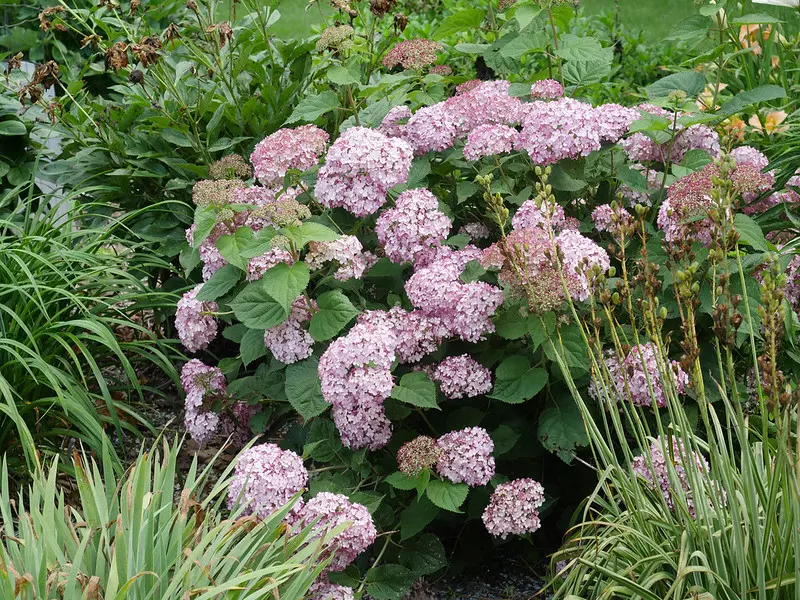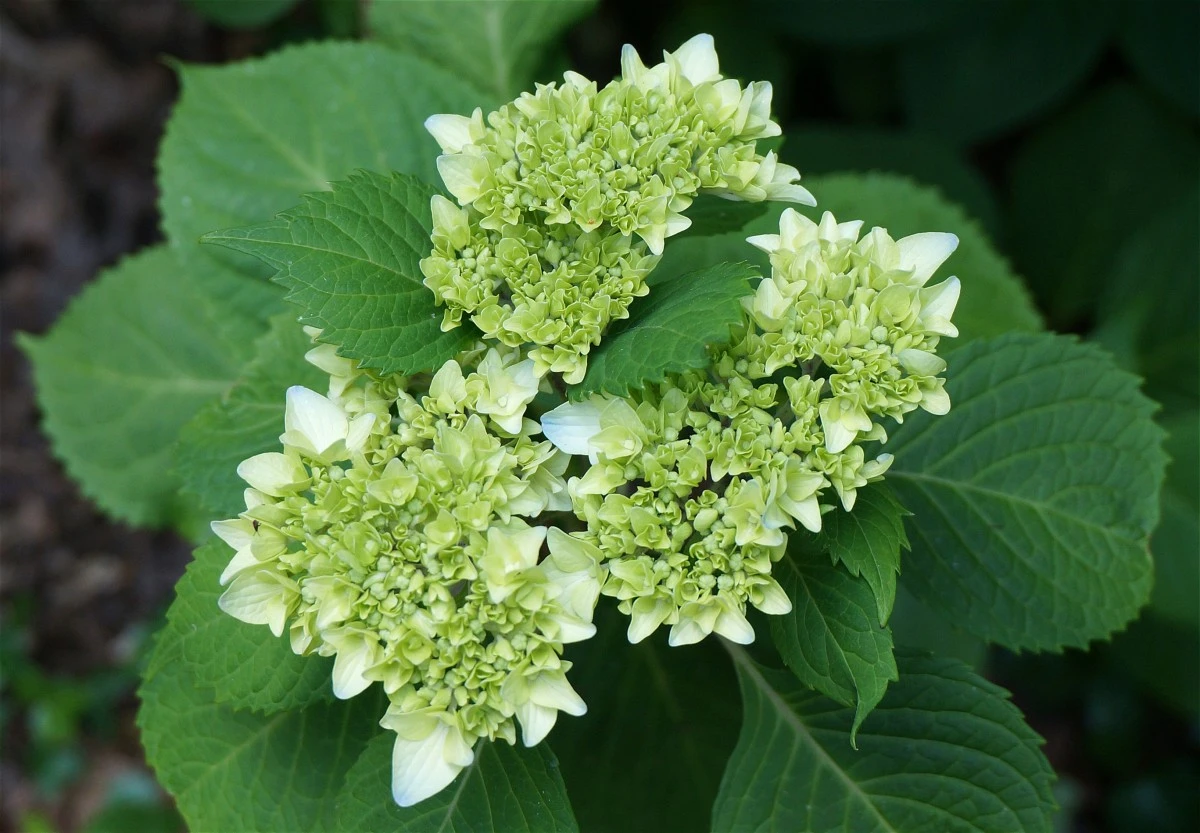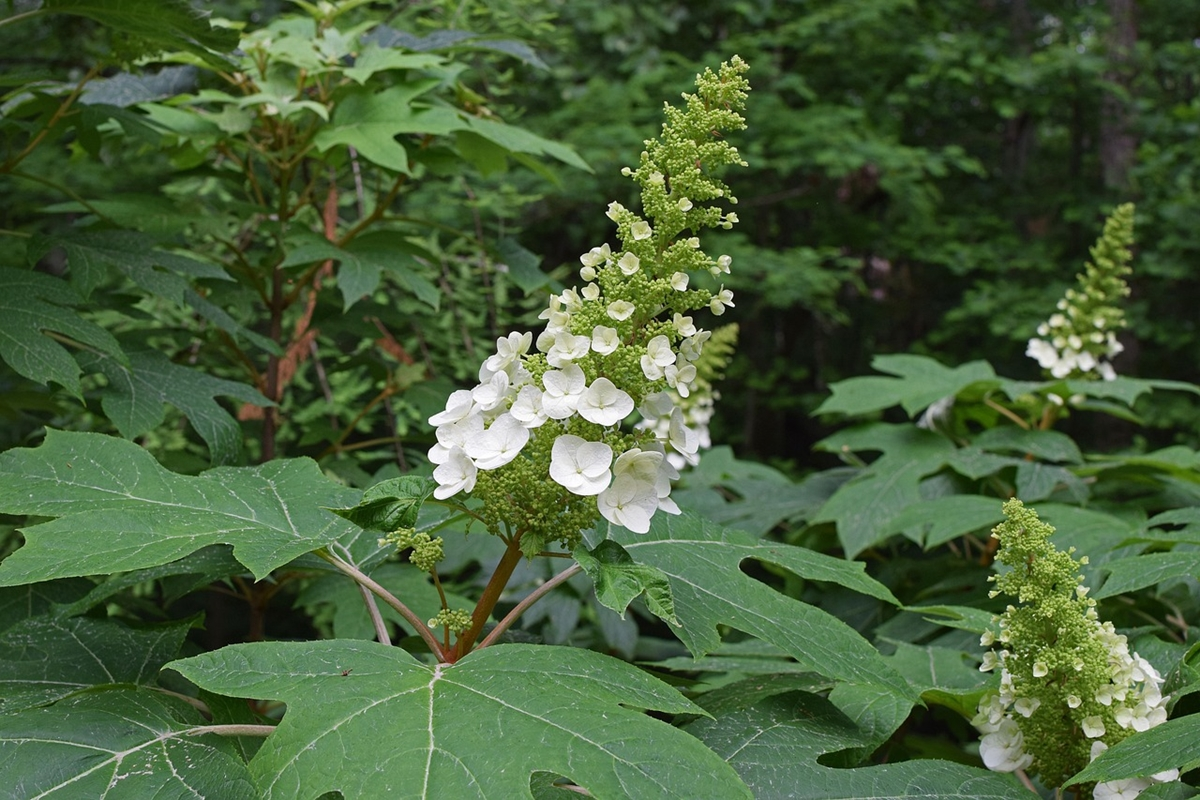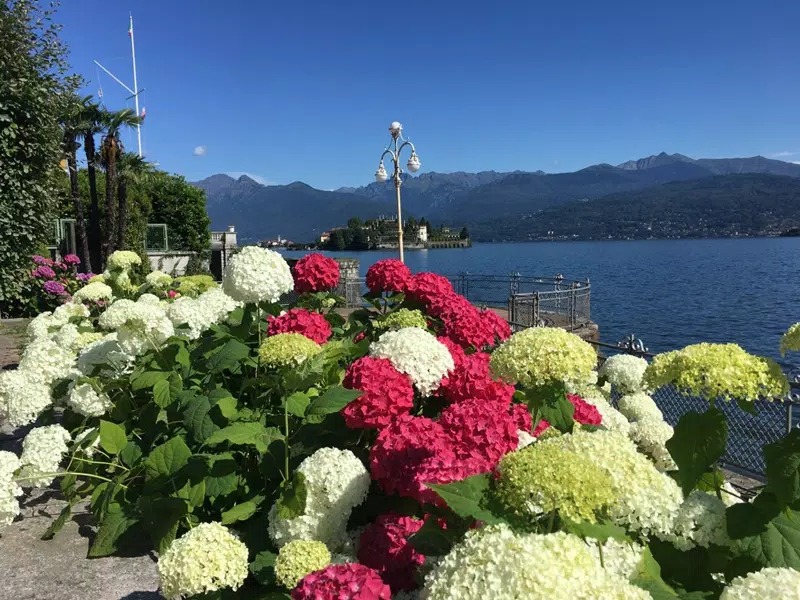
What to plant with hydrangeas - Companion Planting
Discover what to plant with hydrangeas to create a thriving and visually stunning garden. Learn about the best companion plants and their benefits.
Read MoreHydrangeas are beloved for their large, vibrant blooms and architectural presence in the garden. While commonly paired with flowering perennials or shrubs, many gardeners are now exploring the idea of growing herbs as companion plants to hydrangeas. But which herbs are actually suitable? In this article, we explore the best herbs to plant with hydrangeas, what to avoid, and how to make the most of your garden space.

Companion planting herbs with hydrangeas is more than just a space-saving trick - it’s a thoughtful gardening strategy that promotes plant health, biodiversity, and visual harmony. While hydrangeas are known for their lush, ornamental blooms, they can also benefit from having specific herbs growing nearby, both in terms of aesthetics and ecology.
One of the most compelling reasons to grow herbs with hydrangeas is natural pest management. Many herbs, such as chives, lemon balm, and catmint, emit aromatic oils that help repel common garden pests like aphids, slugs, and beetles. Some even act as “trap crops” - intentionally attracting pests to themselves, sparing your hydrangeas. This idea is discussed in detail in The Spruce’s article on interplanting herbs and flowers, which highlights how plants like chervil and sage can play a role in a more resilient garden design.
There’s also a significant benefit to the soil structure and moisture retention that herbs can provide. Low-growing, shade-tolerant herbs such as parsley or sorrel form a living mulch under hydrangeas. This green groundcover not only suppresses weeds but also helps retain moisture - something hydrangeas thrive on, especially during hot, dry spells. In my own garden, I've noticed that a modest patch of parsley under my oakleaf hydrangea made a visible difference in soil texture and reduced watering frequency by midsummer.
I still remember the first time I tucked a small patch of chives beneath my paniculata hydrangea - more out of curiosity than planning. By early summer, the gentle purple flowers of the chives echoed the pink-tinged hydrangea heads, and there were noticeably fewer aphids than in previous years. It was a small win, but it taught me just how powerful these quiet combinations can be.
Biodiversity is another key advantage. Culinary herbs like oregano, thyme, and coriander - when allowed to flower - attract beneficial insects such as hoverflies, bees, and ladybirds. These allies not only help pollinate, but also keep pest populations in check. As we’ve explored in our dedicated guide on hydrangeas for pollinator-friendly gardens, certain hydrangea varieties themselves can play a meaningful role in attracting bees and butterflies. Pairing them with herbs that extend the foraging season strengthens the garden’s ecosystem.
There’s also something undeniably joyful about blending the practical with the ornamental. Herbs add fragrance, texture, and even culinary function to your garden, while hydrangeas offer the lush, romantic backdrop. Lemon balm nestled under a mophead, or flowering parsley dancing beneath a lacecap, brings a kind of relaxed elegance that feels both timeless and intentional.
A neighbour of mine, an RHS-trained horticulturist, once told me he always plants parsley and chervil beneath his oakleaf hydrangeas. “They fill the gaps, stay soft and green, and we never run out of garnish,” he said with a grin. It's advice I’ve taken to heart - and I often think of that tip when I see bees hovering around the tiny flowers I used to overlook.
In summary, herbs and hydrangeas are not just compatible - they’re complementary. From pest control and soil health to pollinator support and sensory delight, this pairing has much to offer. Whether you're new to companion planting or simply want to get more from your garden borders, integrating herbs beneath your hydrangeas is a beautiful place to start.
Before pairing herbs with hydrangeas, it's essential to understand the growing environment that hydrangeas thrive in. Matching companion plants - especially herbs - to these conditions increases the likelihood of success and reduces maintenance needs. Hydrangeas are relatively adaptable, but they perform best when their fundamental requirements are met. Here's a closer look at what they need:
Pro tip: If you're uncertain about your garden's soil pH, consider using a simple home soil test kit before planting. The pH not only affects hydrangea flower colour in some varieties, but it also determines nutrient availability for both hydrangeas and herbs. A slightly acidic soil (pH 6–6.5) is ideal for accommodating a wider range of herbaceous companions, including parsley, lemon balm, and chives.
Understanding and recreating the ideal growing conditions for hydrangeas is the foundation of successful companion planting. By aligning the needs of your herbs with those of your hydrangeas, you'll cultivate a healthier, more balanced garden - one that rewards you with both beauty and resilience.
Choosing the right herbs to grow alongside hydrangeas involves considering shared preferences in light, moisture, and soil type. Fortunately, there are several culinary and ornamental herbs that not only tolerate similar conditions but actively contribute to a healthier, more resilient garden bed. Below are five of the best companion herbs to plant with hydrangeas, based on their adaptability, pest-repelling properties, and ecological benefits.
Chives are one of the most underrated companion herbs. Their clumping growth habit and tolerance for partial shade make them ideal for the base of hydrangea shrubs. In addition to their attractive purple flowers, chives are known to deter aphids - a common pest on hydrangea foliage. They also attract beneficial pollinators when allowed to flower. Their shallow root systems ensure they don't compete with hydrangeas for nutrients.
Lemon balm is a fragrant, fast-growing herb that thrives in moist, semi-shaded conditions - precisely what most hydrangeas prefer. It’s excellent for filling in bare soil, offering both visual interest and weed suppression. The leaves release a subtle citrus scent when brushed, which many gardeners find refreshing. It’s also a magnet for bees and hoverflies when in flower. Because it can spread vigorously, it’s best to prune it regularly or plant it in a sunken pot if space is limited.
A biennial herb with lush green foliage, parsley grows well in dappled light and appreciates the consistent moisture that hydrangeas enjoy. Beyond its culinary uses, parsley attracts predatory insects like hoverflies and ladybirds, which help manage common pests. Its low, mound-forming habit makes it a neat and practical ground cover around shrub bases.
Mint is best known for its vigorous growth and refreshing aroma, but in an open bed it can quickly become invasive. However, when planted in containers and sunk into the soil near hydrangeas, it can serve as an effective pest deterrent while complementing the hydrangea’s thirst for moisture. The flowers are attractive to pollinators, and the scent may help mask plants from browsing pests like rabbits or deer.
Less commonly used but highly suitable, sweet cicely is a perennial herb that thrives in cool, shaded areas with rich soil. Its fern-like foliage and white umbel flowers add lightness and texture beneath broad-leaved hydrangeas. It’s especially useful in woodland-style borders. Sweet cicely also enriches the soil with nutrients as its deep taproots draw minerals up from lower layers.
I once trialled a small cluster of lemon balm beneath an established Hydrangea macrophylla in my north-facing garden border. Initially, I worried it might be too shady, but within weeks the lemon balm had settled in beautifully, helping to suppress weeds that often crept in from nearby paving. It required very little maintenance aside from the occasional trim - and the bees absolutely loved it in late spring.
When selecting herbs to plant with hydrangeas, the key is to find those that thrive in similar conditions without overwhelming their companion. By focusing on shade-tolerant, moisture-loving herbs with ecological benefits, you can create a low-maintenance, beautiful, and pollinator-friendly garden space that evolves season after season.
While many herbs can thrive alongside hydrangeas, it’s important to recognise that not all herbs share the same growing preferences. Some herbs are adapted to environments that are fundamentally incompatible with what hydrangeas require - namely moist, slightly acidic soil and partial shade. Planting these herbs too close to hydrangeas can result in poor growth for both, as their needs are in direct conflict. Below are some common herbs best kept in separate parts of the garden.
These herbs are not inherently incompatible with hydrangeas in terms of appearance, but the contrast in growing conditions is too great for healthy coexistence. While they may thrive in other parts of your garden, planting them too close to moisture- and shade-loving plants like hydrangeas can lead to weak, stressed, or disease-prone herbs - and even disrupt airflow or root conditions for your hydrangeas.
Gardener’s tip: If you love growing Mediterranean herbs like rosemary and thyme, consider placing them in raised beds or terracotta containers in a sunny part of the garden. This way, you can still enjoy their culinary value and aromatic foliage without compromising the wellbeing of your hydrangeas or the herbs themselves.
Ultimately, successful companion planting with hydrangeas is about selecting herbs that share - or at least tolerate - similar moisture levels, light exposure, and soil chemistry. Avoiding unsuitable pairings ensures your garden remains healthy, harmonious, and low-maintenance throughout the growing season.
Successfully growing herbs alongside hydrangeas requires thoughtful planning and a good understanding of each plant’s needs. Although many herbs and hydrangeas can share space harmoniously, applying a few key strategies will help ensure that both thrive throughout the growing season. This is especially true in shaded garden spaces, where the microclimate plays a significant role - for more in-depth guidance on that, see our detailed guide on growing hydrangeas in shaded gardens.
Incorporating herbs into your hydrangea planting scheme can offer aesthetic charm, ecological function, and even culinary convenience. By applying these simple yet effective growing tips, you’ll create a thriving, low-maintenance garden that celebrates both structure and softness, productivity and beauty.
Yes, provided you choose herbs that share similar light and moisture requirements, such as parsley or lemon balm.
Chives, parsley, sorrel, and lemon balm all tolerate partial shade and damp soil well.
Not directly, but soil amendments (e.g. composted herbs) can influence pH over time, which may affect bloom colour.
Some may, especially aggressive spreaders. Use containers or spacing to manage growth effectively.
Yes, provided the mulch is well-composted. Herbaceous mulch can enrich soil, retain moisture, and suppress weeds.
No. Herbs prefer leaner soil and minimal feeding, whereas hydrangeas may benefit from balanced fertiliser in spring.
It’s not recommended. Rosemary prefers dry, alkaline, and sunny conditions - the opposite of what hydrangeas need.
Yes. Chives and mint can deter aphids, while lemon balm attracts beneficial insects that prey on garden pests.
Not directly. But if herbs overcrowd the root zone or compete for nutrients, flowering may be reduced.
Absolutely. Growing herbs like mint or sage in pots placed near hydrangeas gives flexibility and prevents spreading.
Avoid rosemary, thyme, and sage in open soil, as they require full sun and dry, alkaline conditions.
Yes. Flowering herbs like chives, thyme (in pots), and lemon balm can boost pollinator activity in your garden.
Indirectly. Mulching with herb trimmings or interplanting with nutrient-recycling herbs like sweet cicely can help.
Yes. Organic mulches like bark chips or leaf mould suit both, helping to retain moisture and suppress weeds.
Group herbs in low clusters around the base, avoiding overcrowding. Use containers for vigorous growers and maintain airflow.
Combining herbs and hydrangeas can be both beautiful and practical when done thoughtfully. By selecting moisture- and shade-tolerant herbs like chives, parsley, and lemon balm, you can create a vibrant and harmonious planting scheme that supports pollinators, deters pests, and enriches your garden’s biodiversity.
Ready to transform your hydrangea bed? Start small, experiment with one or two herbs, and let nature do the rest.

Discover what to plant with hydrangeas to create a thriving and visually stunning garden. Learn about the best companion plants and their benefits.
Read More
Discover the best companion plants for oakleaf hydrangeas to enhance your garden's beauty. Learn which plants thrive together for year-round interest and healthy growth.
Read More
A comprehensive guide on planting and caring for hydrangeas, covering site selection, soil preparation, planting steps, watering, fertilising, pruning, and pest management.
Read More